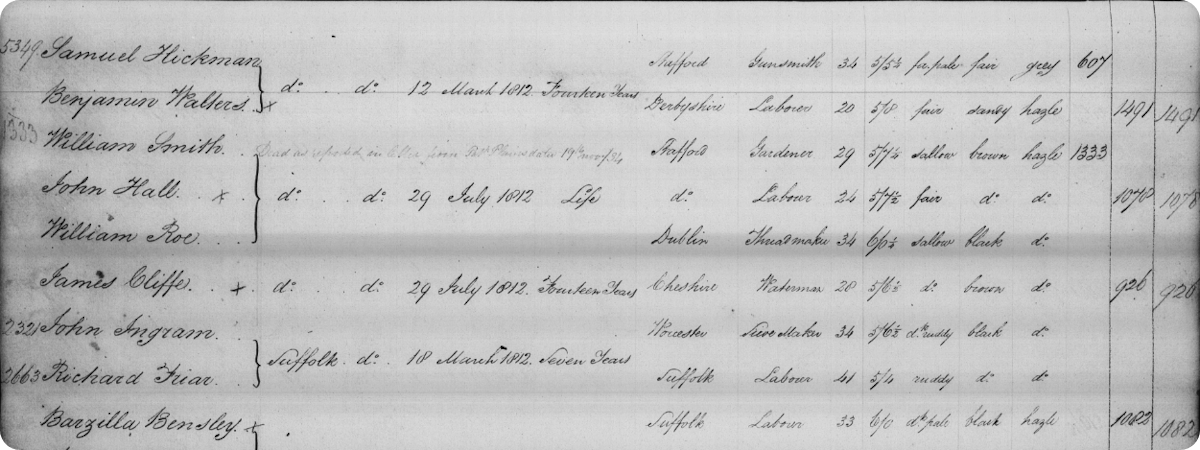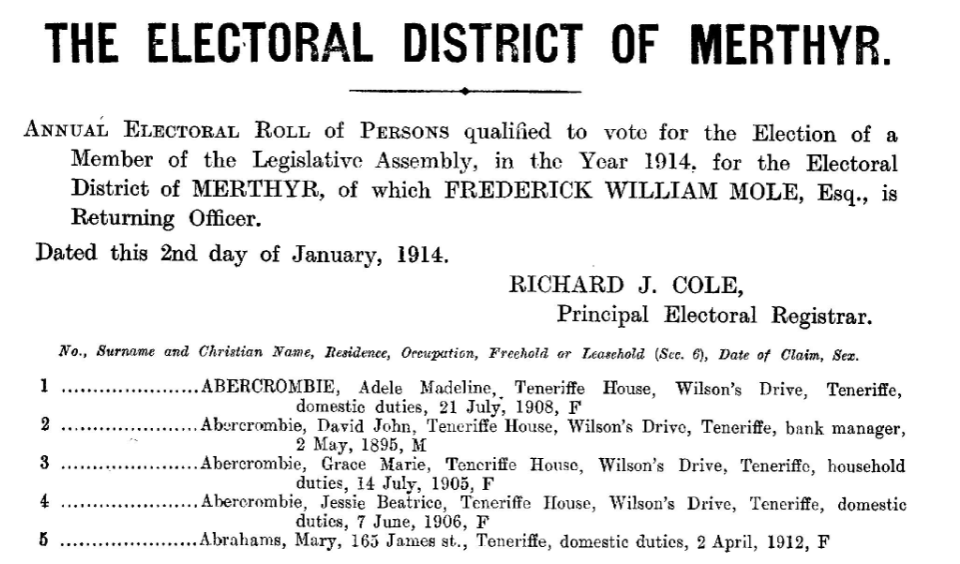21 Australian family record collections you may have overlooked
5-6 minute read
By The Findmypast Team | July 29, 2022

Aussie ancestors? Use these resources to trace their amazing life stories.
Australia has an incredibly rich and colourful history, and its family records can provide amazing detail into how your own family lived and what life was like down under generations ago.
We've put together a handy guide to finding your Australian ancestors in our records. As well as the basic building blocks of birth, death and marriage (BDM) records, we've also taken a look at a collection or two you may be less familiar with.
1. Australia, Births and Baptisms, 1792-1981
Birth and baptism records are crucial for anyone starting their family history journey. Begin tracing your ancestor by browsing through the near half a million records in this collection.

A record from this collection. View this record here.
This will give you a full name, birth or baptism year, and exact place of birth or baptism, meaning you'll have the key information you need to traverse deeper into your Australian heritage.
2. Australia, Marriages, 1788-1935
Once you've discovered where and when your ancestor was born, see if you can trace them all the way up until marriage. These records span across New South Wales, Queensland, Victoria, Tasmania, and South Australia, so it's time to dive in and discover when your ancestor found love.
3. Australia Deaths and Burials, 1816-1980
You've come this far - don't stop now. Close your ancestors journey with a death or burial record.
4. New South Wales, 1828 Census Householders' Returns
The family history journey doesn't end with BDMs, of course. This census was the first ever to occur throughout Australia, and recorded both settlers and convicts.

A snippet from the 1828 New South Wales Census. View this record here.
The details in this census are often particularly vivid - you could discover the ship your ancestor arrived on, how many cattle they owned, their religion, and their occupation, making this a valuable set for understanding your ancestors' lives.
5. Northern Territory Census
This census is also wonderfully detailed, giving you information such as occupation, birth place, religion, and any extra remarks from the enumerator.
These records are also not limited to one decade; you can find returns from 1881, 1891, 1901, 1911, and 1921 in this collection.
6. South Australia Census
This 1841 Census has been through many formats - originally ordered by geography, it was restructured with a page numbering system in 1920, and then turned into a typed index in 1949. You may then find name variants within this index. However, it can help you trace your ancestors further back into the 19th century, and may offer information such as birth place or spouse's name.
7. Passenger Lists Leaving UK 1890-1960
With over 2 million recorded migrants from the UK to Australia, this collection is crucial for understanding the movements of your ancestor.

A snippet from the Passenger Lists Leaving UK collection. View this record here.
These records will give you a full name, birth year, occupation, departure and destination port, and even ship name. You can then use the information found in this collection to search our birth and baptism records and trace your heritage back from there.
8. Australia, Inward, Outward & Coastal Passenger Lists 1826-1972
With 26 million records, this collection is crucial for tracing the migration of your ancestor across Australia. Not only does it record inbound passengers, but it also documents those leaving the country and movements within the region.
There was no standardised format for these records, so the information you can glean will vary page to page. However, you could find information such as occupation, marital status, native place (either birth place or last place of residence), year of departure and any additional notes. All of these could prove vital for taking your research further.
9. Victoria Prison Registers
If your relatives dabbled in criminal behaviour, you might just find them in the Victoria Prison Registers, which can give you details of their crimes and sentencing, as well as various biographical details. You might even come across their mugshot.

Ned Kelly's mugshout in our Victoria Prison Registers. View the full record.
While only a small percentage of the records are those of convicts, the England & Wales, Crime, Prisons & Punishment, 1770-1935 records can help you find huge amounts of information on the court cases and sentencing of your convict ancestors.
10. Australia Convict Ships 1786-1849
Due to the circumstances that surrounded the arrival of most newcomers to Australia from British colonies, crime-related records are a fantastic resource for tracing Australian ancestors. Containing over 188,000 records, Australia Convict Ships 1786-1849 is one of the best sets.

A snippet from the Australia Convict Ships collection. View this record here.
This collection dates back to the Early Fleet ships and records the details of some of the first convicts to come to Australia. Make sure to check the original image with this collection - there may be additional details not recorded in the transcription, such as number of children, prior convictions, hair colour, or distinguishing features.
11. Australia Convict Conditional and Absolute Pardons 1791-1867
If your ancestor was granted pardon by the Governor from the earliest days of convict settlers, you may find them building a new life for themselves within this collection.
You may find details of when the pardon was ordered, when it was granted, or even more information on the terms of their sentence.
12. New South Wales Registers Of Convicts' Applications To Marry 1825-1851
If your ancestor found love in the Australian penal colonies, they may have applied to marry.

A snippet from the Applications to Marry. View this record here.
Each record will contain both a transcription and a black and white image, which could offer information such as spouse's name, occupation or trade, and length of sentence.
13. Australian Military Forces WW2 Missing and Prisoners Of War
If you're looking for Anzac ancestors, then we have a wide array of Australian military records. With over 23,000 records in this collection alone, you may find significant details of your ancestor's service, including whether or not they went tragically missing or were captured as a prisoner of war.
14. Australian Imperial Force Nominal Roll 1914-1918
If you're researching World War 1 ancestors, then look no further. Containing over 322,000 records, this collection details the date of your ancestor's enlistment, their rank and rating, and their unit at time of death.
At Findmypast, you'll find an extensive collection of Australian military records, perfect for tracing Anzac ancestors. It includes the WW2 Missing and Prisoners of War and Australian Imperial Force Nominal Roll 1914-1918. It's worth remembering a lot of Australian soldiers also appear in our other world records, such as the Prisoners of War collection.
15. Letters from Victorian Pioneers
Sometimes, the best things come in small packages and this can certainly be said for some of our Australian social history records.

A snippet from the Letters from Victorian Pioneers collection. View this record here.
The 53 letters in this collection narrate the experience of actual movers in the early days of colonisation, as well as detailing their hardships. They also contain interesting contributions to our knowledge of the Australian Aborigines, including their language and culture, and often notes their conflicts with the White colonialists.
16. Aldine History of Queensland
This incredibly detailed directory documents everything from trade of land to the movements and biographies of British settlers in Queensland.

A snippet from the detailed Aldine History of Queensland. View this record here.
While it is not a collection of indexed names as such, you can run a full text search for your ancestors, and may even find details such as when they married, where they worked and for how long, or even if they were teetotal.
17. Aldine History of New South Wales
This collection comprises two volumes, and is filled with an incredibly rich and illustrated history of New South Wales and its prominent inhabitants. The biographies of noted figures stretch not only in Sydney, but also to the suburbs and regional towns.
18. Aldine History of South Australia
Following the success of the previous two directories, the Aldine History of South Australia is similarly detailed and illustrated. It comprises two volumes and over 1000 pages, including chapters like Flora and Fauna, Education, Aborigines and Religion.
19. Australian Pastoral Directories
This collection lists stockowners throughout Australia, and contains five different years worth of names - 1913, 1923, 1925, 1931 and 1954.

A snippet from the Australian Pastoral Directories. View this record here.
The information given will vary per state, but often you'll find a name and address for your ancestor.
20. Australian Almanacs
If you're searching for ancestors in the 1800s, look no further. This mammoth set of volumes covers 42 years and details everything from horticulture, military establishments, new immigrants, and European governmental decisions. Not only can you find ancestors in these pages, but you can also gain a broader picture of the social landscape at the time.
21. Australia Electoral Rolls
The Australian electoral rolls are a comprehensive source for finding out where your ancestors were at a specific point in time.

A snippet from the Australia Electoral Rolls. View this record here.
You may also find extra information such as your ancestor's occupation. This can be compared with the almanacs and social directories to give you a bolder picture of your ancestor's life.
This is just the tip of the iceberg when it comes to our Australian family records collection. Take a look at what else is available - there's just so much that can help you piece together your Aussie family story. We'd love to hear about your discoveries. Share them with us on social media by tagging @findmypast.




